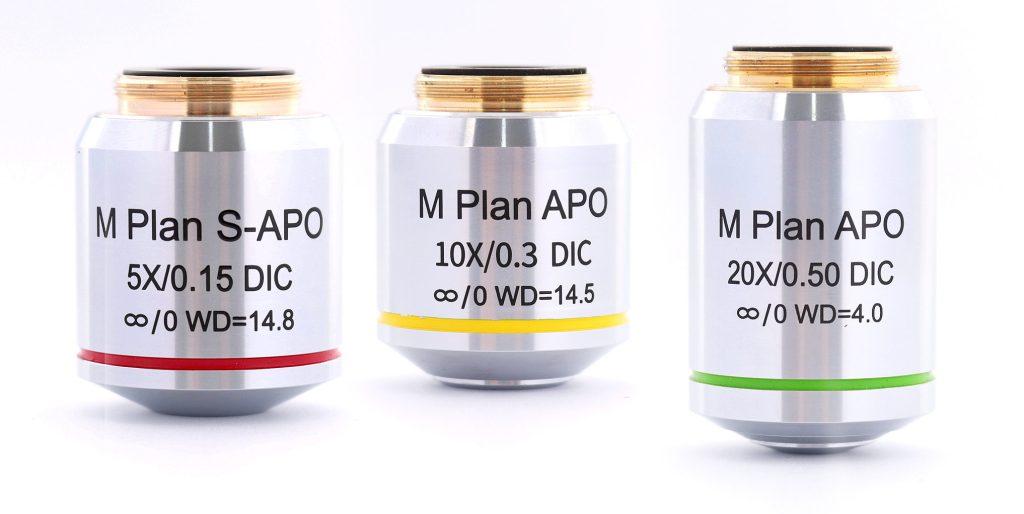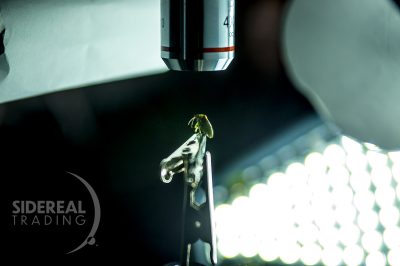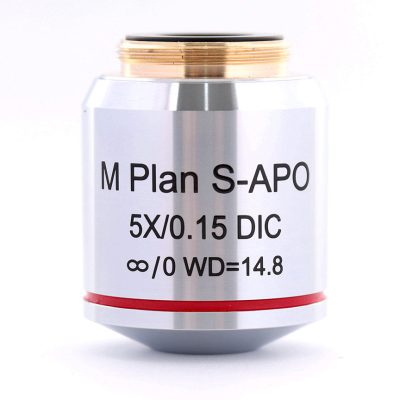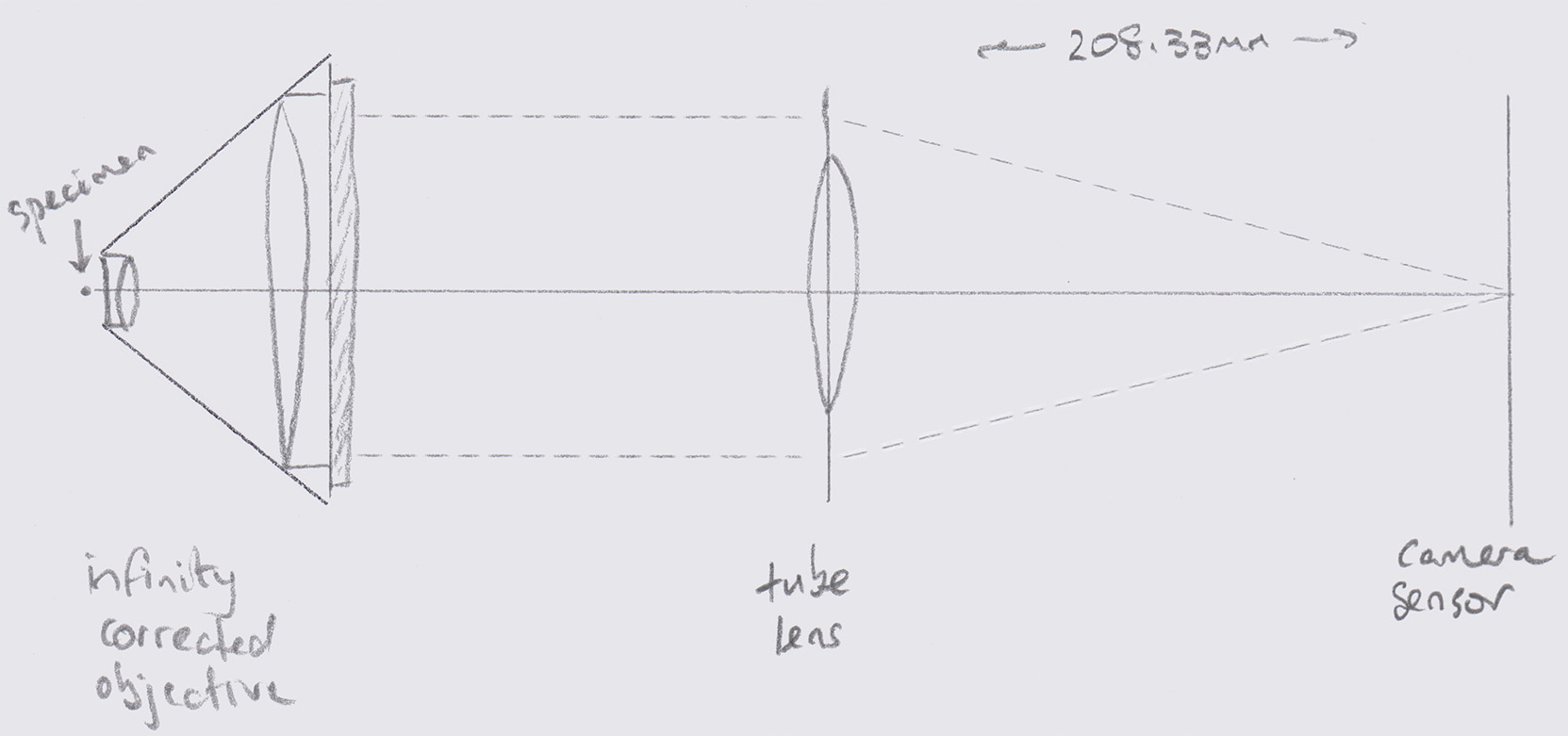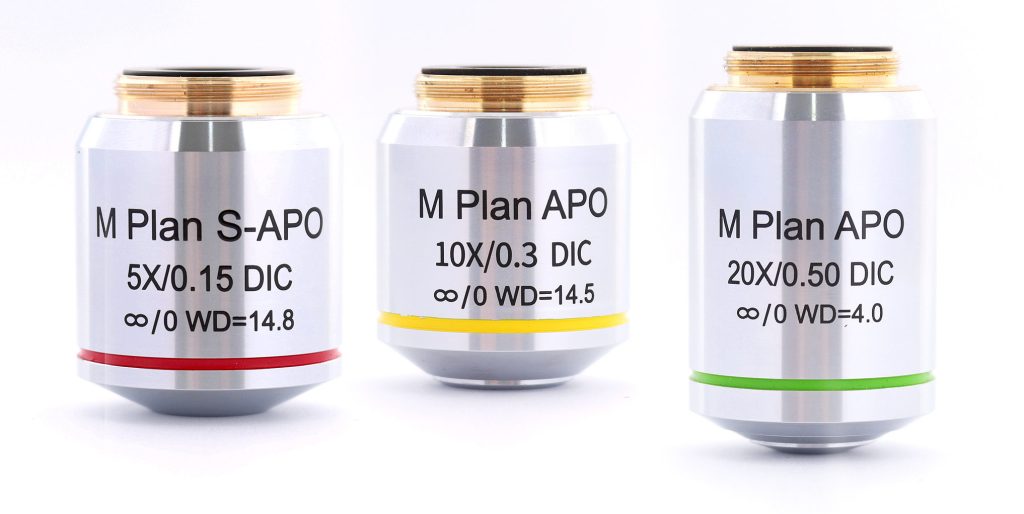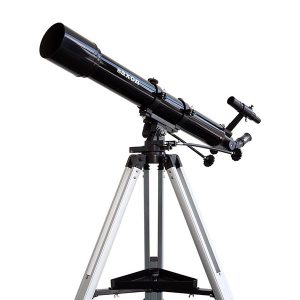Macrophotography with a rail
You may already know that Sidereal is Australia’s only distributor of WeMacro rail equipment. The WeMacro rail is a moving stage that gives you controlled conditions for macrophotography with focus stacking. I’ve mentioned this before, but for geometric reasons, macrophotography has infinitesimal depth of focus and you find yourself refocusing all the time. Rather than your having to touch the equipment (and risk bumping the subject and ruining the shot), the WeMacro uses a stepper motor to move your camera in tiny increments. It’s a game changer, and I’ve talked about it in other posts.
But what about those crazy lenses?
You can use a standard “macro” lens you get with your camera to get shots, and we’ve talked about this (including reversing lenses) in other blogs. But if you want to go extreme, you need a different type of lens. It’s done with an “infinity corrected objective”, which is more akin to a lens off a microscope.
When the specimen is at exactly the right distance from the objective, the light rays that move away are exactly parallel. That is, they meet at an infinite distance. Here’s one of my hand scribbled diagrams.
The specimen (that is, the little bug or whatever it is you’re photographing) is the little dot on the left. Light from the specimen expands in all directions (of course) but some is captured in the microscope lens – that’s the triangular-shaped component to the right of the specimen. The final element in the lens has a flat surface, and light rays from that lens come off at a right angle and are therefore exactly parallel.
I’ll get back to how this makes an image on your camera sensor in a moment, but first…
What’s the point?
The foremost reason for using an infinity corrected lens is so that all the light from the lens is parallel. This means that you can move the objective closer to and further from the camera without significantly affecting optical effects such as magnification. Incidentally, the space to the right of the objective is called the infinity space. Wasn’t that a series on HBO?
But there are other advantages to an infinity lens. First, you can insert elements into the zone downstream of the infinity lens, like filters. Because the light rays are all parallel, as long as your filter is in straight, you don’t need to worry about problems with refraction because the light hits the filter dead on.
Second, the infinity design minimises optical aberrations and better enables their correction. This means that the image will be clearer than a traditional lens. As magnification gets higher, the quality improvement becomes more noticeable.
For scientific or analytical applications, you can add beam splitters or optical fibre pickups to alter the light path and look at interference patterns and other … scientific stuff.
So what’s going on in the middle there?
Halfway down the tube towards the camera sensor, you’ll often (not always) find another lens. This is called the “tube lens” and is placed exactly one focal length from the camera sensor. The parallel rays from the objective lens are focused by the tube lens project an exquisitely sharp image on your camera sensor.
WeMacro gear normally couples with a 3-element Japanese-made Raynox DCR-150 Macro Lens. This has a focal length of 208.33mm, which specifies where it has to be in the imaging train.
Of course, you can use other lenses as a tube lens, and WeMacro provide a series of adapters (like this one combined with this one) so you can attach the infinity objective to the end of your own camera’s lens. It fits onto the lens’ filter thread.
The objective lenses themselves
You may also have noticed the letters APO on the lens. This means the lens is apochromatic, meaning there is negligible chromatic aberration in the lens. For this reason, your images will be sharper, less hazy, and have good colour correction, including on the interface between light and dark areas.
Another advantage of the apochomatic lens is that red, green and blue light focuses at the same point, meaning the rays in the infinite zone are cleaner and more … well, parallel.
You’ll also notice the objectives are rated by magnification. These factors multiply the magnification already in the optical system (that is, provided by the tube lens). Having an objective magnification of 5x gives an image that is significantly more than in than a standard “macro” lens. There are also 10x and 20x objectives.
Until recently, the Mitutoyo brand objectives were the gold standard for infinity corrected objectives. Like other optics, things to look out for are colour correction (chromatic aberration), field flatness (off-axis focus), haze and dispersion.
However, WeMacro has been able to obtain APO infinity objectives that are nearly as sharp while still being reasonable in price. They’re significantly better than the older standard glass objectives available until now.
So to get an image?
You’ll need a WeMacro rail, a camera, a Raynox tube with lens and camera adapter, and an infinity lens. If you decide to use your own camera’s lens, you can go without the Raynox lens, but you’ll need adapters to get the infinity lens onto your camera. You’ll also need quite a bit of patience while adjusting the train and learning about light. The highest magnification lens has a very short working distance, meaning the lens is very close to your specimen and can cast unwanted shadows.
But it’s a whole new world.
